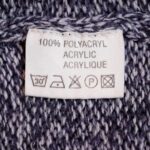Identifying Quality: 8 Red Flags in Clothing

In an era where sustainability and conscious consumption are gaining momentum, discerning consumers are increasingly prioritizing quality over quantity when it comes to clothing purchases. However, recognizing quality isn’t always straightforward, especially in a market flooded with fast fashion and luxury brands. To help navigate the complexities of garment construction and material selection, style experts offer insights into common red flags that indicate clothes may not stand the test of time.
 1. Low-Quality Fabrics: The Foundation of Durability
1. Low-Quality Fabrics: The Foundation of Durability
The choice of fabric plays a pivotal role in determining a garment’s longevity. While natural fibers like silk, cashmere, cotton, wool, and linen are generally preferred for their durability and comfort, blends with synthetic fibers can compromise quality. Synthetic materials, such as acrylic, are prone to pilling and deteriorate quickly over time, signaling poor long-term investment.
2. Flawed Sewing: A Telltale Sign of Craftsmanship
Inspecting the stitching of a garment reveals valuable insights into its construction quality. Crooked stitching and irregular seam sizes are indicative of subpar craftsmanship, compromising both the aesthetic appeal and structural integrity of the clothing item. Additionally, loose threads or snags in the fabric may signify underlying quality issues that could worsen with wear.
3. Fabric Pilling: A Common Indicator of Wear
The presence of pills, those unsightly fuzz balls that accumulate on clothing, often signifies low-quality fabrics prone to deterioration. Fabrics like polyester and nylon, along with poor-quality natural fibers, are notorious for pilling, detracting from the garment’s appearance and comfort over time.
 4. Absence of Lining: Sacrificing Durability for Aesthetics
4. Absence of Lining: Sacrificing Durability for Aesthetics
While sheer garments may exude elegance on the runway, the absence of lining compromises both functionality and longevity. A lack of lining in dresses and blazers diminishes their durability and may necessitate additional undergarments for modesty and comfort, undermining the garment’s versatility.
5. Pattern Symmetry: A Marker of Attention to Detail
Well-constructed garments exhibit symmetrical patterns and design features, reflecting meticulous attention to detail in their production. Misaligned patterns or asymmetrical pockets suggest sloppy craftsmanship and detract from the overall aesthetic appeal of the garment.
6. Zipper Quality: The Functionality Test
The durability and functionality of zippers are crucial factors in garment quality assessment. High-quality zippers glide smoothly and withstand repeated use, whereas inferior zippers may jam or break easily, rendering the garment impractical and frustrating to wear.
 7. Button Material: A Touch of Authenticity
7. Button Material: A Touch of Authenticity
Buttons made from natural materials like shell or stone are indicative of superior quality and craftsmanship. Testing the temperature of buttons against the skin can help discern between natural and synthetic materials, with cold buttons signaling authenticity and durability.
8. Decorative vs. Functional Buttons: A Practical Consideration
Functional buttons contribute to the garment’s functionality and ease of wear, whereas decorative buttons serve primarily as embellishments. Ensuring that buttons are not merely ornamental but also serve a practical purpose enhances the garment’s utility and longevity.
By familiarizing oneself with these red flags and incorporating them into the shopping process, consumers can make informed decisions that prioritize quality and sustainability, ultimately extending the lifespan of their clothing and minimizing environmental impact.

















